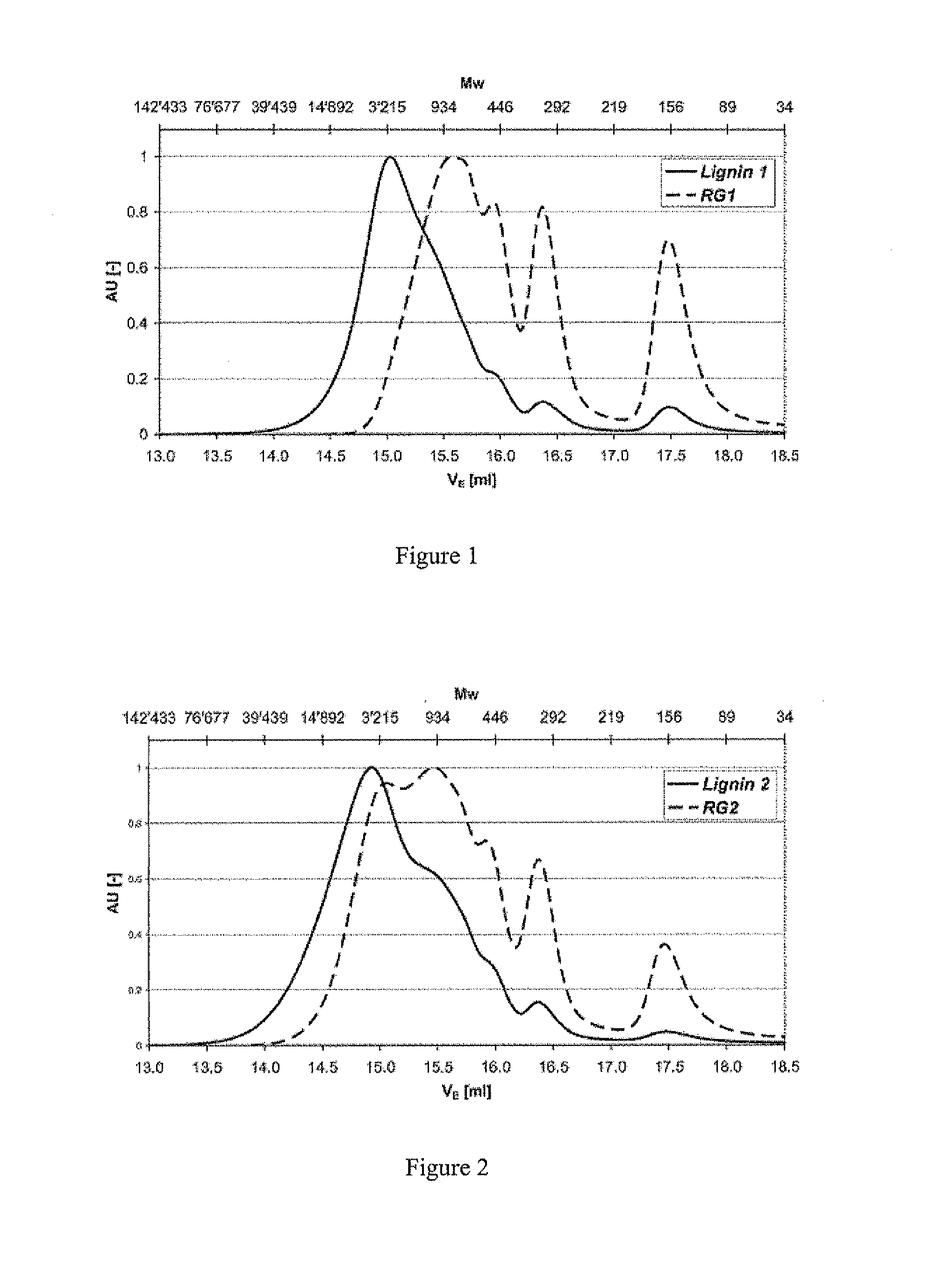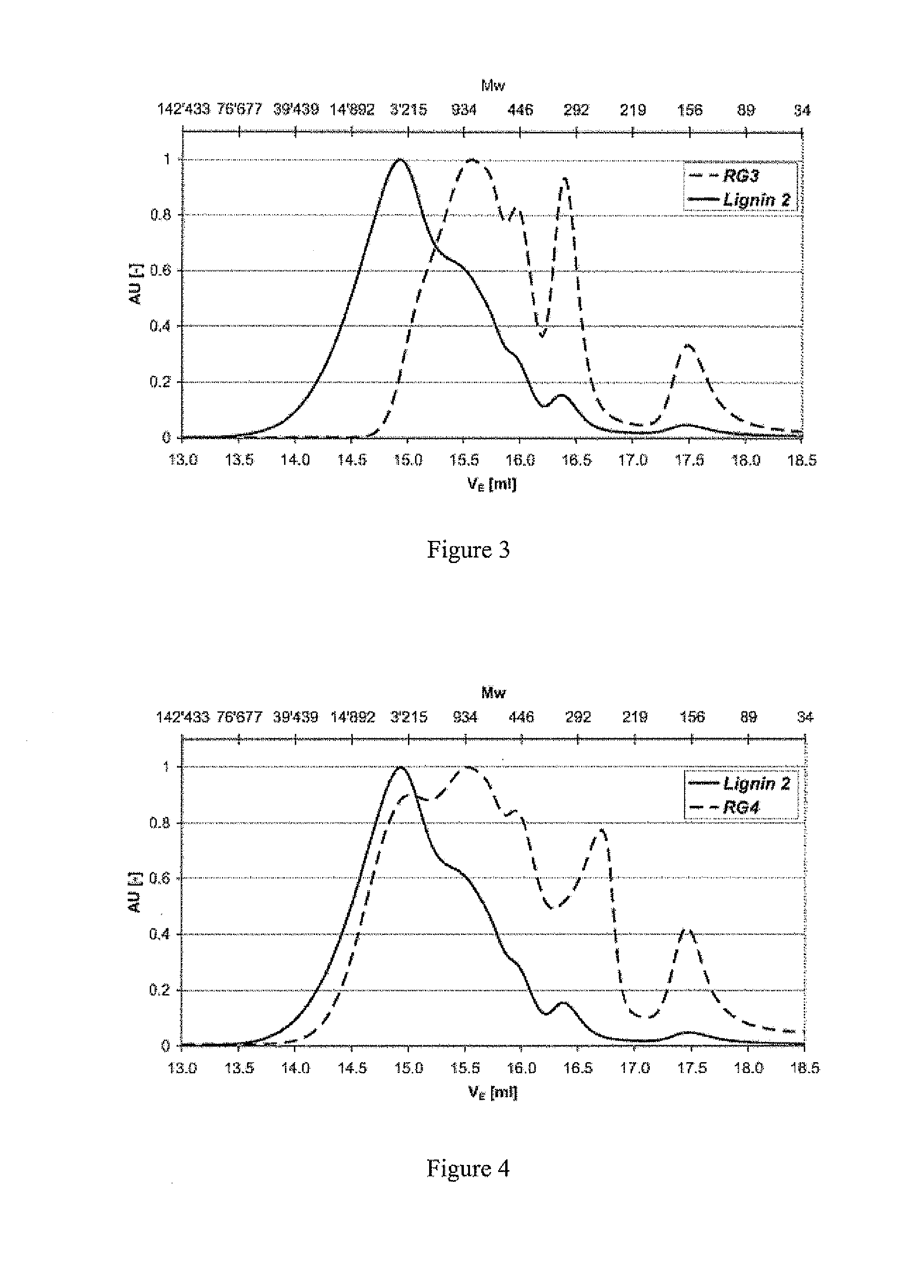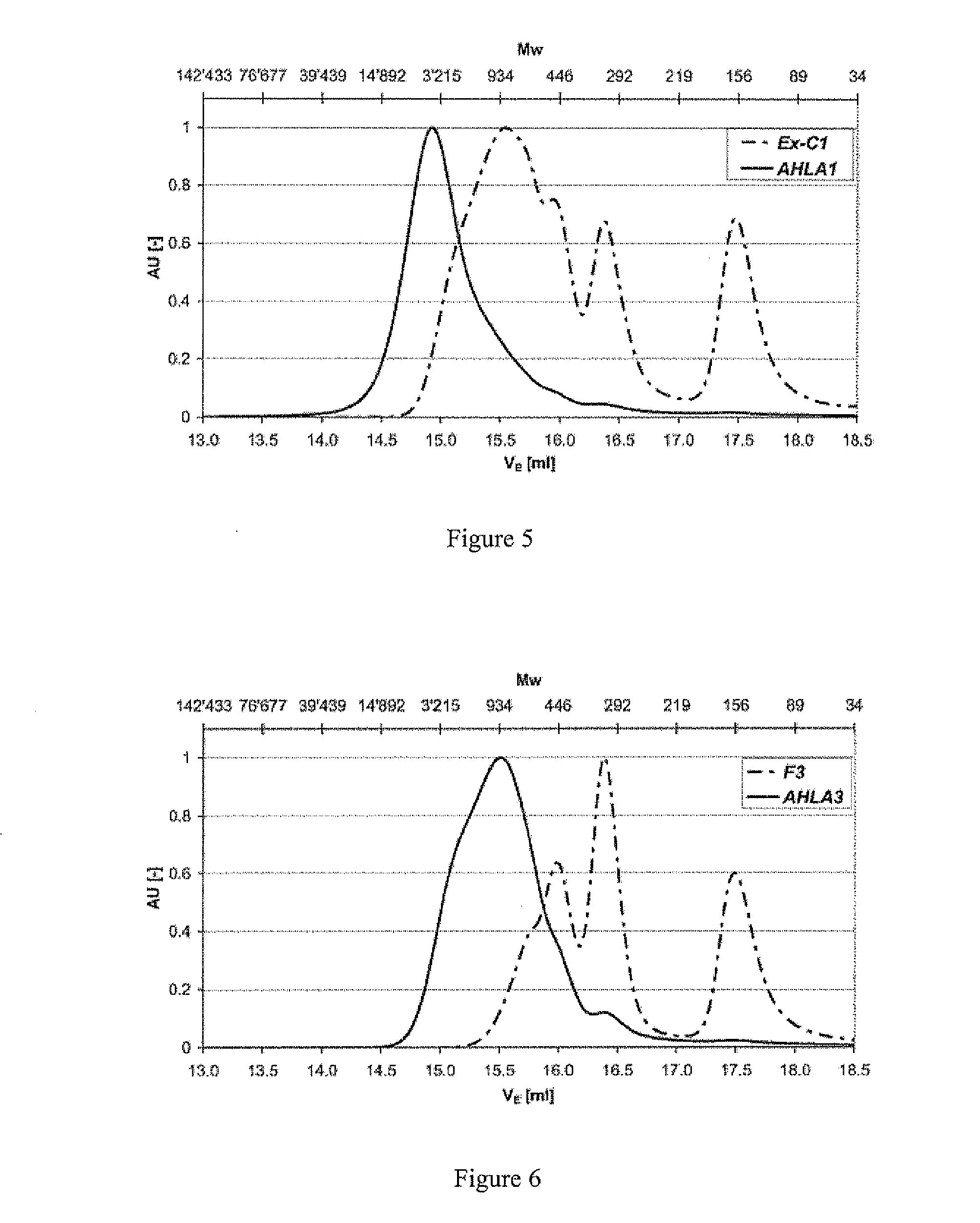Method for producing chemically modified lignin decomposition products
a technology of lignin and decomposition products, which is applied in the direction of lignin derivatives, organic chemistry, chemistry apparatus and processes, etc., can solve the problems of reducing the economic value of lignin in the production of chemicals
- Summary
- Abstract
- Description
- Claims
- Application Information
AI Technical Summary
Problems solved by technology
Method used
Image
Examples
example 1
Lignin 1 / Separation Via Extraction
[0091]A mixture of 80 mL methanol and 20 mL water was produced as reaction mixture. The pH of the solution was adjusted by the addition of a few drops of concentrated sulfuric acid with simultaneous measuring by a Polilyte HT120 sensor (Hamilton Bonaduz AG, CH-Bonaduz) to pH 1.10. The solution was subsequently transferred into a 400 mL autoclave (Premex Reactor AG, CH-Lengnau) provided with a gassing agitator. Before the reactor was closed, 1 g lignin 1 was added. The mixture was then loaded three times with 11 bar oxygen, which was then let off again in order to displace the initially present air in the reactor. Finally, the reactor was filled with 11 bar oxygen and the mixture heated at an agitator speed of 1000 RPM with a rate of 8 K / min to 170°. The mixture was held at 170° C. for 20 min. and subsequently cooled off within 60 min. to below 30° C. The reactor was then decompressed, opened and the liquid reaction mixture (including the accumulatin...
example 2
Lignin 2 / Separation Via Extraction
[0094]Example 2 was carried out in a manner analogous to example 1 except that instead of lignin 1, lignin 2 was used. The corresponding reaction mixture is accordingly designated in the following as RG2, the solid as S2, the chloroform extract as Ex-C2 and the aqueous phase as Ex-W2. Since the aqueous phase Ex-W2 still contained lignin decomposition products, in example 2 the solid S2 was combined with aqueous phase Ex-W2, mixed, pre-dried on a rotary evaporator and finally freeze-dried and the separated high-molecular lignin decomposition product designated as AHLA2.
example 3
Lignin 2 (Larger Autoclave) / Separation Via Ultrafiltration
[0095]Example 3 was carried out in a manner analogous to example 1 except that instead of lignin 1, lignin 2 was used and a larger amount of lignin was used. The corresponding reaction mixture is accordingly designated in the following as RG3. This reaction mixture was adjusted with NaOH to pH 10.7, evaporated to low bulk on a rotary evaporator and subsequently freeze-dried. Of the 7.5 g solid obtained, the greatest part of the low-molecular decomposition products as well as of the salts was separated by ultrafiltration with a 1000 Dalton membrane. During the ultrafiltration, the solution is separated in an agitated ultrafiltration cell (300 mL volume) at a pressure of approximately 4 bar via a membrane with an indicated exclusion boundary (e.g., 1000 Daltons here). The phase that passes the membrane is designated as filtrate and the remaining phase is designated as residue. The filtrate obtained here has been designated as f...
PUM
| Property | Measurement | Unit |
|---|---|---|
| pH | aaaaa | aaaaa |
| temperature | aaaaa | aaaaa |
| temperatures | aaaaa | aaaaa |
Abstract
Description
Claims
Application Information
 Login to View More
Login to View More - R&D
- Intellectual Property
- Life Sciences
- Materials
- Tech Scout
- Unparalleled Data Quality
- Higher Quality Content
- 60% Fewer Hallucinations
Browse by: Latest US Patents, China's latest patents, Technical Efficacy Thesaurus, Application Domain, Technology Topic, Popular Technical Reports.
© 2025 PatSnap. All rights reserved.Legal|Privacy policy|Modern Slavery Act Transparency Statement|Sitemap|About US| Contact US: help@patsnap.com



